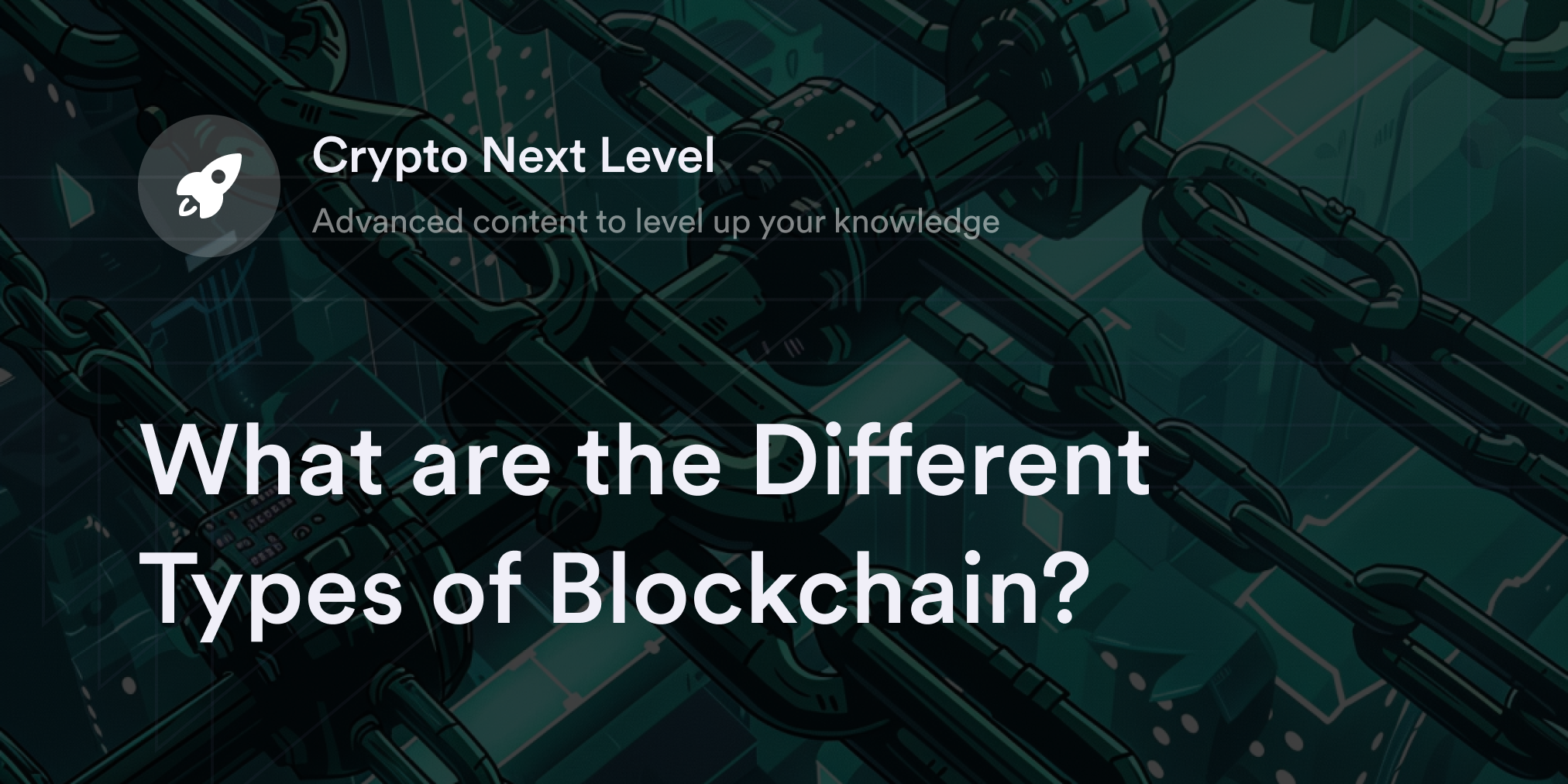


Communication is no longer just a nice-to-have in modern technology—it’s a must, especially in blockchain, where transferring data and assets seamlessly between different networks is important. Enter cross-chain interoperability, a pivotal innovation that bridges isolated blockchain systems, enabling them to interact and exchange information efficiently.
In this guide, we’ll review cross-chain interoperability, including what it is, how it works, and why it’s important. We’ll also discuss its limitations in crypto protocols.
What is cross-chain interoperability?
The cryptocurrency industry consists of various blockchain networks. Traditionally, blockchains have operated in isolation, each functioning as a separate, closed ecosystem with its own unique rules, protocols, and governance structures. This isolated nature has been a significant barrier to widespread blockchain adoption, limiting the transfer of information and value between different networks. Cross-chain in crypto seeks to overcome these barriers by enabling different blockchains to connect and interact.
This interoperability is achieved through various technical solutions, such as blockchain bridges, sidechains, and interoperable blockchain protocols. These technologies facilitate the transfer of assets, data, and smart contract instructions across different blockchain networks. This enhances blockchain usability by allowing for greater user flexibility and choice and fosters innovation by enabling different blockchains to leverage each other's strengths.
For example, a user can execute a smart contract on one blockchain while using assets from another, or developers can build decentralized applications (dApps) to operate across multiple blockchain platforms.
Cross-chain interoperability is a step toward realizing the full potential of blockchain technology, paving the way for a more connected and efficient digital economy.
How does cross-chain technology work?
Cross-chain technology creates bridges connecting different blockchain networks, allowing them to communicate and exchange data and assets. This process involves a series of steps and mechanisms to ensure secure and efficient interactions between the chains.
Communication protocol creation
The first step involves establishing a standard communication protocol that enables different blockchains to understand and process each other's data. This protocol must be compatible with blockchain architectures and consensus mechanisms.
Asset transfer mechanisms
For transferring assets between blockchains, mechanisms like atomic swaps or wrapped tokens are used.
Atomic swaps facilitate the exchange of one cryptocurrency for another without the need for a third party, while wrapped tokens represent assets from one blockchain on another blockchain, typically through smart contracts.
Smart contract integration
Smart contracts play an importantrole in cross-chain technology. They automate the verification and recording of transactions across different blockchains, ensuring the terms of the exchange or interaction are met before any transfer is finalized.
Use of intermediaries or relays
Some cross-chain solutions use intermediary chains or relays to facilitate communication between blockchains. These intermediaries act as a bridge, receiving, verifying, and forwarding transactions from one chain to another.
Why is cross-chain communication important?
Cross-chain communication holds significant importance in blockchain for several key reasons. Here are a few:
Enhanced network efficiency and usability
Cross-chain interoperability allows users and developers to leverage the strengths of multiple blockchains simultaneously, leading to more efficient and versatile applications. This also enhances user experience, as they can interact with multiple blockchain ecosystems without switching between different platforms or wallets.
Increased innovation and collaboration
Cross-chain interoperability fosters a collaborative environment that encourages innovation by enabling different blockchain networks to communicate and share resources. Developers can create more complex and useful dApps that use the unique features of various blockchains. This collaborative ecosystem can lead to the development of new use cases and business models that were impossible within the confines of a single blockchain.
Improved liquidity and market expansion
Cross-chain interoperability facilitates the free flow of assets and information across different blockchains, which can significantly improve liquidity in the crypto market––facilitating broader market access so traders can engage with less popular chains.
Better resilience against centralization and single points of failure
Relying on a single blockchain can lead to centralization and introduce risks like network congestion and single points of failure. Interoperability distributes these risks across multiple chains, enhancing the overall resilience and stability of the blockchain infrastructure.
Enhanced scalability solutions
Cross-chain technology can also be a solution to scalability issues. Allowing transactions and processes to be distributed across multiple chains alleviates the burden on individual networks, potentially leading to faster transaction speeds and lower fees.
Are there any risks associated with cross-chain interoperability?
Like everything in cryptocurrency, there are risks associated with cross-chain interoperability. Here are a few:
Security vulnerabilities
One of the most significant challenges of cross-chain interoperability is maintaining security across different blockchain networks. Each blockchain has its own security protocols and consensus mechanisms, and creating a bridge between them can introduce vulnerabilities. Attackers might exploit these vulnerabilities, potentially leading to issues like double-spending, smart contract exploits, or asset theft.
Bridges don’t always possess the most robust security measures, and their ability to open doors for illicit behavior is a heavy concern among many digital currency enthusiasts. In fact, recent data suggests that nearly 70% of all digital currency hacks in 2022 occurred through cross-chain bridges.
Scalability concerns
While cross-chain interoperability aims to address scalability issues, it can also exacerbate them. Processing cross-chain transactions often requires additional steps for verification and consensus, which can lead to increased transaction times and costs, especially when dealing with high volumes of cross-chain transfers.
Complexity in integration
Integrating multiple blockchains with varying protocols, consensus mechanisms, and governance models is inherently complex. This complexity can lead to technical challenges, increased potential for bugs or errors, and difficulties maintaining and updating the interoperable system.
Reliance on third parties
As some cross-chain solutions rely on intermediaries or bridges, this can introduce points of centralization and counterparty risk. These intermediaries can become targets for attacks or may act maliciously themselves, compromising the trustless nature of blockchain transactions.
Fragmented liquidity
While interoperability seeks to improve liquidity, it can also lead to fragmentation. The existence of multiple bridges and protocols for cross-chain interaction can divide liquidity pools, making it challenging to achieve optimal asset use across different networks.
Up about crypto game with dYdX Academy
Eligible traders looking to upgrade their crypto knowledge can turn to dYdX Academy, our in-house resource library that includes easy-to-understand guides on all things blockchain.
dYdX also offers eligible traders access to a premier decentralized exchange to trade crypto perpetuals contracts with up to 20x leverage. For more details on how dYdX works, head to our official blog, and eligible traders can start trading on dYdX today.
Disclosures
The content of this article (the “Article”) is provided for general informational purposes only. Reference to any specific strategy, technique, product, service, or entity does not constitute an endorsement or recommendation by dYdX Trading Inc., or any affiliate, agent, or representative thereof (“dYdX”). Use of strategies, techniques, products or services referenced in this Article may involve material risks, including the risk of financial losses arising from the volatility, operational loss, or nonconsensual liquidation of digital assets. The content of this Article does not constitute, and should not be considered, construed, or relied upon as, financial advice, legal advice, tax advice, investment advice, or advice of any other nature; and the content of this Article is not an offer, solicitation or call to action to make any investment, or purchase any crypto asset, of any kind. dYdX makes no representation, assurance or guarantee as to the accuracy, completeness, timeliness, suitability, or validity of any information in this Article or any third-party website that may be linked to it. You are solely responsible for conducting independent research, performing due diligence, and/or seeking advice from a professional advisor prior to taking any financial, tax, legal, or investment action.
You may only use the dYdX Services in compliance with the dYdX Terms of Use available here, including the geographic restrictions therein.
Any applicable sponsorship in connection with this Article will be disclosed, and any reference to a sponsor in this Article is for disclosure purposes, or informational in nature, and in any event is not a call to action to make an investment, acquire a service or product, or purchase crypto assets. This Article does not offer the purchase or sale of any financial instruments or related services.
By accessing this Article and taking any action in connection with the information contained in this Article, you agree that dYdX is not responsible, directly or indirectly, for any errors, omissions, or delays related to this Article, or any damage, injury, or loss incurred in connection with use of or reliance on the content of this Article, including any specific strategy, technique, product, service, or entity that may be referenced in the Article.







